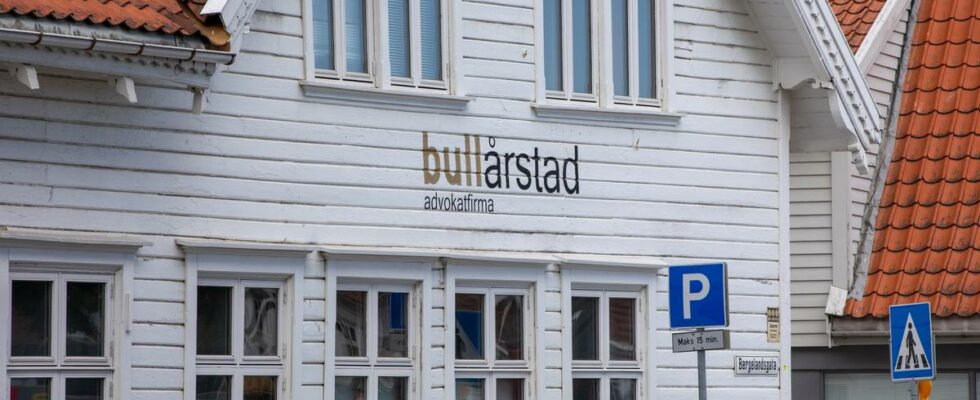Økokrim has charged the late lawyer Per Asle Ousdal with gross fraud. Økokrim confirms this to news. – Økokrim is still investigating the case related to loan fraud in Rogaland. Several interrogations have been carried out, but we do not want to go into detail about who has been questioned or how many, says First State Attorney Geir Kavlie. There are no other defendants in the case apart from the deceased lawyer. None of Ousdal’s family members have thus been charged, even though they received harsh criticism in court in September. Per Asle Ousdal is being investigated by Økokrim on suspicion of extensive fraud against several victims. Claims of at least NOK 700 million have been notified. Photo: advokat-ousdal.no – It is positive that they are investigating – Økokrim has an ongoing dialogue with the Norwegian Financial Supervisory Authority and the Supervisory Board for Legal Practice, and is awaiting their reports, says Kavlie in Økokrim. The investigation will continue throughout the autumn. – We take note of the charge against Per Asle Ousdal. It is positive that Økokrim is investigating the case, says lawyer Jacob Sverdrup Bjønness-Jacobsen in Grette, who represents the family of the deceased Per Asle Ousdal to news. Økokrim has no further comments on the case at this time. They opened an investigation into Ousdal in June. The biggest loan scandal in Norwegian history The lending scandal Per Asle Ousdal, former partner in the law firm Bull Årstad DA in Stavanger, is said to have raised loan capital from investors over several decades. These were offered interest rates of 10–15 per cent, without risk. The lawyer enjoyed a high degree of trust in the local business community, and he was a sought-after board member in various businesses. He informed the lenders that the law firm guaranteed the paid-in funds through so-called declarations of suretyship, but the guarantees turned out to be false. The lawyer left Bull Årstad on 31 December last year. The company reported him to the police on 31 May, and he took his own life three days later. The family has chosen to be open about this. The lenders who have lost money are both companies and private individuals in Rogaland, mostly south of Stavanger: In Sandnes, Ålgård and in the municipalities of Klepp, Time and Hå. The case broke in the media late in the evening on Wednesday 12 June. Then Sandnesposten reported that there had been a claim for at least half a billion kroner in the estate of a recently deceased lawyer from Sandnes. Dagens Næringsliv published a longer article about the entire case complex shortly afterwards. Økokrim announced on 18 June that they would start an investigation. The Sør-West police district is also involved in this. On 21 June, Finanstilsynet also announced that they had started follow-up of certain companies in the case. This applies, among other things, to certain banks, as well as accounting agencies and audit firms. Ousdal is involved in an extensive financial scandal involving fake loan agreements and missing funds. So extensive that it is called the biggest loan scandal in Norwegian history. The lawyer left his job at the law firm Bull Årstad on 31 December last year. The company reported him to the police on 31 May this year, and he took his own life three days later. This is how the fraud happened: How could a lawyer manage to keep a fraud going for several decades, and deceive more than a hundred people for several hundred million kroner? We will try to explain this step by step: The first investors were offered to pay in loan capital which the now deceased lawyer Per Asle Ousdal said he would pass on to people who needed loans. The lenders were presented with interest rates far above what the market could otherwise offer. The money was paid into Ousdal, either to his private account, or to a large extent to the client account in the law firm in which he was a partner. But the money never passed on to the borrowers. They didn’t exist. The loan documents that Ousdal had drawn up were false. Instead, Ousdal used a good portion of the money that kept coming in from the lenders to pay out interest to the investors who had already joined. So far, everyone was satisfied, and no one suspected. In addition, Ousdal took part of the cake himself, either for private consumption or for his own investments. Over the years, more and more capital came in from new lenders, and for a long time Ousdal had enough money to pay out interest to those who were already in. At one point, the fraud scheme began to grow too large for Ousdal. This was especially true when lenders started insisting on having the entire loan repaid, what is known as the principal. Of course, such repayments require much more than just paying out interest. And as long as there were no real borrowers at the other end, there was no one who could repay the loans, other than Ousdal himself. But he had spent the money, either on himself or to pay interest. Beyond 2024, Ousdal was unable to make all the payments because new payments were no longer able to cover the ongoing obligations. The house of cards collapsed, and in June this year the scandal became a fact. Published 09.10.2024, at 10.39 Updated 09.10.2024, at 11.48
ttn-69
Økokrim has charged Per Asle Ousdal with gross fraud – news Rogaland – Local news, TV and radio

